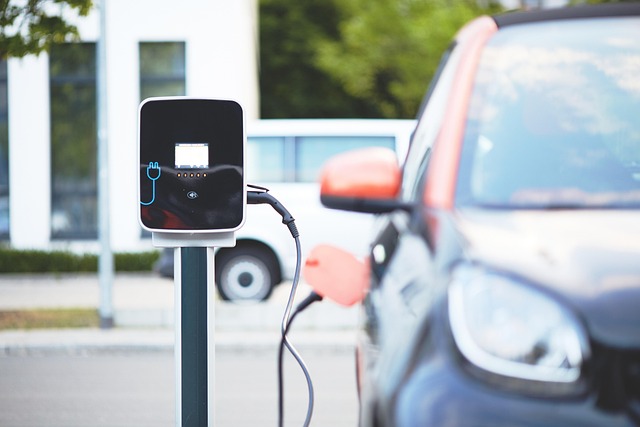Looking to register your car in California? Navigating the process can seem daunting, but with the right preparation, it’s seamless. This guide breaks down the steps involved, from gathering essential documents to using a DMV VIN verifier for accuracy. Learn how to submit your application and fees, then explore post-registration considerations. Ensure a smooth experience by understanding California’s requirements with our comprehensive step-by-step instructions.
- Understanding the California Car Registration Process
- Gathering Necessary Documents for Registration
- How to Verify a Vehicle's VIN (Vehicle Identification Number) using DMV Services
- Submitting Your Application and Required Fees
- After Registration: Important Steps and Considerations
Understanding the California Car Registration Process

Understanding the California Car Registration Process
Registering a car in California involves several steps that can seem daunting at first. However, with the right preparation and knowledge, the process becomes more manageable. The initial step is to gather all necessary documents, including proof of ownership, proof of insurance, and valid identification. Once you have these ready, it’s time to visit or contact the Department of Motor Vehicles (DMV) in California. The DMV will require vehicles to pass a safety inspection and a vehicle identification number (VIN) verification, which can be conveniently done through a mobile VIN verifier for added convenience.
During the registration process, you’ll need to fill out an application form, pay the required fees, and possibly arrange for a new license plate. The DMV will then issue a registration certificate, updating your vehicle’s official records. It’s crucial to keep your registration up-to-date, as it’s essential for road legalities and can be easily checked through a mobile VIN inspection. This ensures that your vehicle complies with California’s safety standards and is fit for public roads.
Gathering Necessary Documents for Registration

Before heading to the California Department of Motor Vehicles (DMV) to register your car, ensure you gather all the essential documents. This process typically requires proof of ownership, which can be in the form of a vehicle registration from the previous state or country of purchase, or a bill of sale. Don’t forget to bring along your valid driver’s license and proof of insurance.
Additionally, you’ll need to obtain a Vehicle Identification Number (VIN) verifier from the DMV or use a mobile VIN verifier service for inspection. This step is crucial as it verifies the vehicle’s history, ensuring there are no outstanding issues or recalls. A vin inspection guarantees that the car you’re registering is safe and legal, which is essential for roadworthiness in California.
How to Verify a Vehicle's VIN (Vehicle Identification Number) using DMV Services

To verify a Vehicle Identification Number (VIN) using California’s Department of Motor Vehicles (DMV) services, start by visiting the official DMV website. There, you’ll find resources dedicated to helping you confirm the VIN’s validity and accuracy. One effective method is to utilize the DMV’s online VIN verifier tool. This digital service allows you to input your vehicle’s unique VIN and receive instant feedback regarding its authenticity and any associated records.
If you prefer a more hands-on approach or face issues with the online process, consider reaching out to the DMV for alternative solutions, such as a mobile vin inspection or using one of their designated vin verifier tools. These options ensure that your vehicle’s history is thoroughly checked, providing peace of mind during the registration process.
Submitting Your Application and Required Fees

After completing your vehicle’s registration application, it’s time to submit it along with all the necessary documents and fees to the California DMV (Department of Motor Vehicles). The process typically involves a few key steps. First, ensure your vehicle passes the state’s emissions test if applicable. Then, arrange for a DMV VIN verifier to check and verify the Vehicle Identification Number (VIN) of your car. This step is crucial for accurate registration.
Along with your application, you’ll need to pay the required fees, which may include a registration fee, vehicle license fee, and possibly emissions testing costs. You can typically do this at a local DMV office or, conveniently, opt for a mobile vin inspection or vin verification service, allowing you to complete these tasks from the comfort of your home or workplace.
After Registration: Important Steps and Considerations

After registering your car with the California DMV (Department of Motor Vehicles), there are several crucial steps and considerations to ensure a smooth ownership experience. One important aspect is maintaining accurate records, including keeping the vehicle’s registration documents up-to-date. It’s essential to store these papers securely, as they’re often required for future transactions like selling or insuring the car.
Additionally, consider utilizing tools like the DMV’s VIN verifier or even a mobile VIN verification service. This process involves checking the vehicle identification number (VIN) to verify the car’s history, including any accidents, outstanding loans, or recalls. A vin inspection can be done quickly and conveniently through mobile services, ensuring you’re always aware of your vehicle’s background.
Registering a car in California is a straightforward process, but it requires careful preparation. By understanding the steps involved, gathering all necessary documents, and utilizing DMV services for VIN verification, you can ensure a smooth registration experience. Remember to submit your application with the required fees and follow important post-registration considerations. With these steps, you’ll be on your way to becoming a California car owner in no time, making sure your vehicle is legally registered and ready to hit the road.



